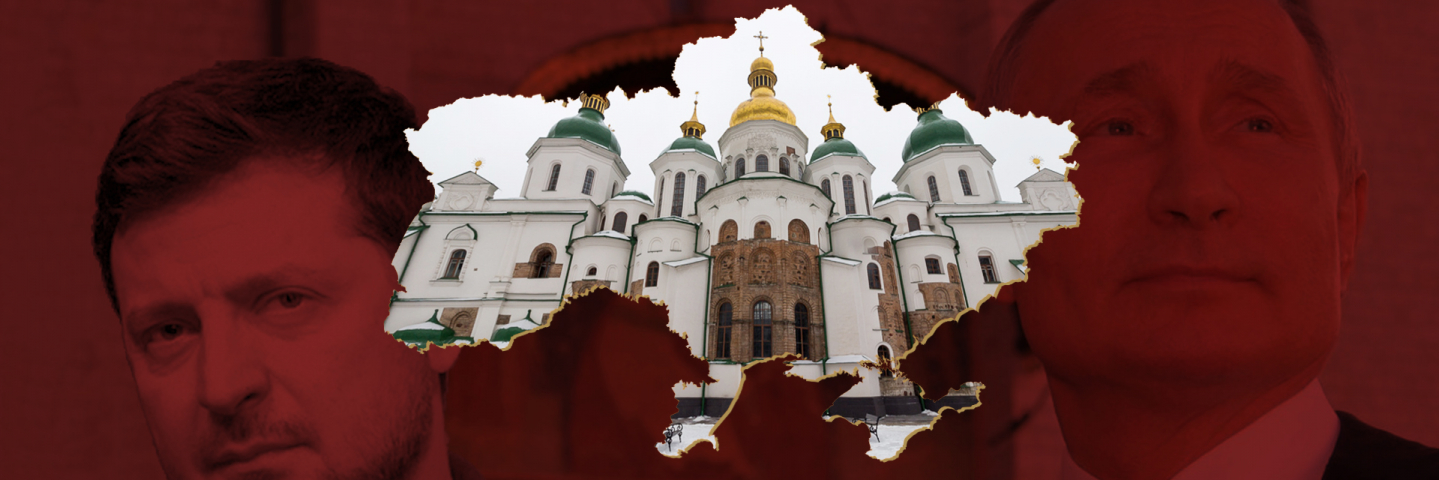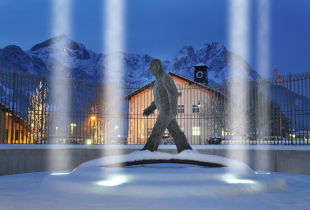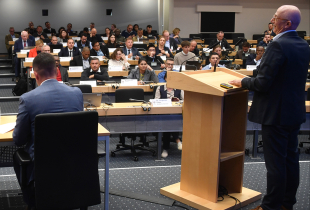
The United States-Germany and Ukraine
Introduction
This year our Strategic Competition Seminar Series (FY23 SCSS) activities focus on the theme of alternative Ukrainian future trajectories and the implications these may have for Russia and the West. SCSS#7 attends to the nature and strength of U.S. and German political, economic, and military support for Ukraine and identifies factors and dynamics that might change commitment levels. The seminar also characterizes Nordic-Baltic support for Ukraine following Finland’s accession into NATO.
Germany’s Zeitenwende Support for Ukraine
Russia’s invasion of Ukraine was an unthinkable shock to the German political elite, heightening perceptions of a direct military threat to Germany for the first time since the end of the Cold War. Chancellor Olaf Scholtz delivered his Zeitenwende (“change-in-times”) speech and in absolute numbers Germany has delivered. Germany is one of the biggest givers of financial, economic, and humanitarian support to Ukraine and this support was instrumental in Ukraine continuing to function over the winter of 2022/2023. This support allowed Ukraine to begin to rebuild what Russia has destroyed and increase the resilience of Ukrainian society. However, when adjusted for wealth and size of population, Germany does not provide as much as Poland or the Baltic States.
The invasion of Ukraine challenged “old thinking” in German policy circles characterized by ‘steady state’ notions of restraint, incrementalism, cautious multilateralism, and value-neutral relations with Russia and China. Given its starting point, Germany has had to change faster and further than any other European country, with the exception of Ukraine. In terms of energy policy, Germany switched from Russian gas to renewals and LNG. The changes were not gradual, but dramatic and decisive. By contrast, defense gaps are evident. A fully equipped German NATO division by 2025 able to “hold its own in high-intensity combat” will only be able to “fulfil its obligations to NATO to a limited extent” and manpower shortages are a constant.
How can we explain this mixed picture? First, “new thinking” has yet to fully take root, as the initial threat assessment of Russia in February 2022 has diminished over time. Germany’s political elite is driven by fear and self-deterrence. This can be attributed to socialization and experience. Germany finds itself in a new strategic environment, without a map or compass. Those currently in government have never been trained in thinking of categories of existentialism: war and peace; life and death. The default thinking is: “if we don’t think about war, it just won’t happen.” For many in the elite, including the Chancellor’s Office, the new reality (war is not only “thinkable” but it is happening) challenges their prior assumptions and narratives and represents a legitimate threat to their role as political actors and influencers.
Second, for the wider business elite, Germany’s Wohlstand (prosperity) business model built on high end manufacturing using cheap Russian energy was challenged by the new reality. Russia’s invasion of Ukraine has shed light on the scale and depth of connections and networks between leading politicians (for example, former Chancellor Schroeder), business interests, policies, and personal interest and wealth.
Third, a core focus of the current Chancellor’s Office is maintaining societal cohesion, reducing friction, and keeping Germany united. On February 2, 2023 a Forsa opinion poll asked the question if “the problems of Ukraine matter for Germany and if it should get involved”: only 43% agreed with the proposition, down 11% from February 2022. The three-party coalition (Liberals, Greens, and SPD) are subject to factional infighting, and support for Ukraine could become a political issue if a consensus is broken. This promotes incrementalism in policy formulation rather than decisive advances.
In the defense and security field, one minister of defense, whose tenure was characterized by inaction, has been replaced with another, Boris Pistorius. After the delay in sending main battle tanks, the German government quickly approved Poland’s request to give five Cold War era MiG-29s acquired from Germany in 2004 to Ukraine. The decision to send main battle tanks has taken the question of German military support to Ukraine off the domestic debate table and broken the logjam.
However, a more forward-leaning Pistorius faces a daunting and interlinked agenda: supporting Ukraine; rebuilding Germany’s hollowed-out armed forces, and determining German contribution to European defense. Questions abound: What role will Germany have in rebuilding Ukraine after the war? How will Germany contribute to help Ukraine defend itself against and deter Russia? What will Germany’s position be on security guarantees, particularly on Ukraine joining NATO?
U.S. Commitment to Ukraine
The size of financial, humanitarian, and military aid packages and assistance to Ukraine demonstrates strong bipartisan consensus within the political establishment to continue such support. A stand-alone bill in May 2022 was passed 86: 11 in the Senate and 356: 57 in the House. However, current U.S. commitment masks a growing opposition to Ukrainian solidarity, evident in the “far left” and “far right” wings of the Democrat and Republican parties. Interestingly, such opposition is based on different reasoning.
On the “far left” we see parallels with German discourse, as progressive politicians and organizations highlight notions of “peace is good and war is bad.” Here we see a tendency to push for peace at any cost and oppose military assistance to other countries no matter the strategic rationale, interest at stake, or obligation under Article 51 of the UN Charter (“right of self-defense”). The “far right” is potentially more influential in U.S. politics. It channels a long history of isolationism, a tradition reinvigorated by the Trump presidency. Aspiring Republican Party presidential candidates such as Donald Trump and Florida Governor Ron DeSantis seek to gain support from this bloc. DeSantis argues against “as long as it takes” by promising “no blank check diplomacy,” characterizes Russia’s invasion of Ukraine as a “territorial dispute” (though this statement was “walked back”), and points to more pressing priorities, such as “the Mexican border” and China’s “near peer” threat to U.S. interests.
If Russia’s war of imperial aggression against Ukraine bleeds over into 2024, fatigue could become a factor, particularly in the context of a U.S. presidential election, a polarized U.S. electorate, and bitterly partisan politics. Three factors promote continued commitment and so mitigate these trends. First, mainstream bipartisan support for Ukraine remains strong, with still a comfortable margin of error in voting for further assistance bills for Ukraine. This provides a buffer. Second, the potential success of Ukraine’s counter offensive in terms of further substantial territorial gains will solidify the perception that with a little more western assistance Ukraine can “finish the job.” Such perceptions consolidate support. Conversely, though, failure of the counter-attacks to regain territory will reinforce the perception of a stalemate and pressure to “push for a peace” deal, or at least a negotiated armistice, will increase. Third, Russian conduct in the war – new attacks on civilians and revelations of atrocities in occupied territories – may result in a surge of sympathy for Ukraine and strengthen American commitment. A potential Black Swan can be identified, namely the U.S. debt ceiling and U.S. debt default that could place economic and financial constraints on U.S. support for Ukraine.
A part of the U.S. defense community understands China as a U.S. priority. Attrition of Russia in Ukraine “sequences the threats” but military and financial support for Ukraine runs the danger of placing the United States in a position where it cannot effectively support Taiwan due to depletion of resources. The United States seeks to balance support for Ukraine with holding material in reserve for a potential future contingency, not just in Asia, but also a potential spillover from Ukraine into a Russian war with NATO or a NATO member state.
In addition, U.S. commitment to managed or calibrated support for Ukraine is also informed by the notion that too sudden or total Russian defeat risks either a “Putin panics” moment, where Putin orders the use of non-strategic nuclear weapons, leading to wider regional instability or Russian civil war and the disintegration of the Russian Federation (“loose nukes or warlords”). A slower more gradual defeat normalizes Russian responses and lowers the risk of nuclear escalation. Lastly, the United States has allocated a certain amount of money to Ukraine assistance. This results in trade-offs that affect the nature of military assistance, since major platforms such as F-16s are expensive, and providing them means that the United States has less money to pay for more immediately useful supplies such as shells for Ukrainian artillery or replacement air defense missiles.
Nordic-Baltic Solidarity for Ukraine
Nordic-Baltic is more united in their support and solidarity for Ukraine than ever before. Germany, despite by geography and coastline constituting a Baltic state, is not considered part of this community, as its unwavering support for the Nordstream project alienated and antagonized its partners in the region and soured relations.
Nuances in Baltic-Nordic support are apparent. The Baltic states (Estonia, Latvia, and Lithuania) and Poland are very vocal in their support for Ukraine and calls to resist Russian aggression, while the four Nordic states (Norway, Denmark, Finland, and Sweden) are less vocal and visible but give much more unpublicized material assistance.
This lower profile Nordic support can be explained by two factors. First, the key project for Nordic states is continued NATO enlargement of Sweden, now that Finland has joined. Swedish integration needs to be complication-free and a lower profile fits this goal. Second, unlike in Germany or the United States, there is little room for debate over Ukrainian solidarity, such is the overwhelming public and political consensus. Although the Nordic states boast a long peace building tradition, with Karl Deutsche in 1957 coining the notion of a “security community” and Johan Galtung exploring “positive” and “negative” peace, experts in this tradition view Russian internal moves to dictatorship and external aggression as creating the conditions in which “peace,” including “peace talks” and a “peace settlement,” are unthinkable as long as Putin is in power.
If Ukraine is unable to trust Putin (a target of the International Criminal Court) to negotiate a “just” or “positive peace” then support for Ukraine’s right to defend itself and de-occupy territory taken by Russia by force becomes the logical response. This response materializes in strong Nordic support for the tank coalition and now the F-16 fighter jet coalition. Denmark is about to retire but can now donate F-16s to Ukraine. Norway has retired its F-16 fleet and these jets are still serviceable. (Swedish Grippen fighters and Finland F-18s are less compatible with Ukraine’s needs). Ukraine’s need for an air force to enable combined arms counter-attacks is taken for granted in the Nordic states. Sweden’s contribution with 155-mm howitzer (Archer) makes a significant on the battlefield as it enhances the mobility of the Ukrainian military.
The defeat of the Finnish coalition government, though, gives pause for thought. The outgoing government did not lose the election because of policy disagreement over support for Ukraine (there is none in Finland), but because of the state of the economy. Question of money, resources, and funding will loom large in the future and debates over the trade-offs inherent in material and financial support for Ukraine will become part of national discourse. This will likely constrain the quantity, if not quality, of future support.
Conclusion
Trade-offs and the need to balance policy priorities are apparent in the U.S. context between support for Ukraine and the ability to address future contingencies. In the Nordic states it is centered on resources, funding, and priorities. Germany is developing a national security strategy. This NSS will become a litmus test for German strategic consensus, particularly as it relates to Russia and China and the balance between “old” and “new” thinking. It will likely confirm the proposition that Germany can do “do ethical policy on Russia or China, but not both at once.”
Another theme highlighted by this seminar is what might be termed the issue of “the day after tomorrow” i.e. Ukraine’s desired end state. In theory a “mutually hurting stalemate,” the “ripeness” of the moment, or UNSC enforcement actions can all freeze a conflict and lead to peace negotiations. In practice, Russia believes post-September 2022 referenda in the four occupied regions that it fights now on constitutionally mandated Russian territory in Ukraine. Not only is compromise with Ukraine impossible, but according to its own self-serving narrative, Russia is now being solely defensive and reactive. Through further Russian troop mobilizations and long-game attrition, Russian “victory” is possible.
By contrast, Ukraine’s focus is on a military “breakthrough,” leading to a culmination point within the Russian armed forces. A breakdown in the Russian narrative is likely if this “unthinkable” for Russia unfolds, leading to Ukrainian victory possible regime change in Moscow. One success would lead to the next. What is clear is that Russian definitions of “victory” are minimalist – take Sloviansk in Donetsk region and Zaporizhzhya (the regional capital), declare a “Korean scenario solution,” continue to sanctions-proof Russia, and receive tacit support from China. Ukraine’s definition of victory is more maximalist, predicated on a military breakthrough and Russian battlefield capitulation.
What is viable will only come into focus on “the day after tomorrow” following Ukraine’s coming counter-attacks and data from the battlefields. Ukraine postponement of the counter offensive generates anxiety as relative success or failure will translate into different alternative future end states, from victory/defeat to protracted conflict, frozen conflict, and negotiated peace. This debate has yet to take place. When it does, it is likely that a new set of trade-offs will be discussed, based on territorial control, security guarantees – Ukraine’s future defense and deterrence capabilities - justice and reparations. Discussion should not pre-empt Ukrainian choices and decision-making but should be joined with Ukrainian leaders and strategic community as a way of understanding better trade-offs and informing choices.
Russia’s own end-state will also come into focus. Russia itself is too big and complex to constitute a North Korea, but Russia could impose near North Korean levels of coercion and control in the occupied territories of Crimea. Ukraine’s victory is unlikely to signal and then trigger the collapse of the Russian Federation. Russia is less fragile and more resilient than it appears. It can absorb a defeat and survive, thanks to effective propaganda, repressive apparatus, and the alibi of “escalating” to fight the political West on the “central front” for the hearts and minds of the Global South, particularly its “hedging middle.”
April 18, 2023
About the Authors
Dr. Dmitry Gorenburg is Senior Research Scientist in the Strategy, Policy, Plans, and Programs division of the Center for Naval Analysis, where he has worked since 2000. Dr. Gorenburg is an associate at the Harvard University Davis Center for Russian and Eurasian Studies and previously served as Executive Director of the American Association of the Advancement of Slavic Studies (AAASS). His research interests include security issues in the former Soviet Union, Russian military reform, Russian foreign policy, and ethnic politics and identity. He currently serves as the editor of Problems of Post-Communism.
Dr. Christian Mölling is Deputy Director of the Research Institute of the DGAP and Head of the Center for Security and Defense. Before joining DGAP, Christian Mölling worked at the German Marshall Fund of the United States (GMF), in the Security Policy Research Group of the German Institute for International and Security Affairs (SWP), at the Center for Security Studies at ETH Zurich and at the Institute for Peace Research and Security Policy at the University of Hamburg. He was a visiting fellow at the European Union Institute for Security Studies in Paris, the Royal United Services Institute (RUSI) in London and the Fondation pour la recherche stratégique in Paris.
Dr. Pavel Baev is a Research Professor at the Peace Research Institute Oslo (PRIO). He is also a Senior Non-Resident Scholar at the Brookings Institution (Washington DC) and a Senior Research Associate with the French International Affairs Institute (IFRI, Paris). Pavel specializes in Russian military reform, Russian conflict management in the Caucasus and Central Asia, energy interests in Russia’s foreign policy, and Russian relations with Europe and NATO.
Dr. Graeme P. Herd is a Professor of Transnational Security Studies in the Research and Policy Analysis Department at the George C. Marshall European Center for Security Studies. His latest books include Understanding Russia’s Strategic Behavior: Imperial Strategic Culture and Putin’s Operational Code (London and New York, Routledge, 2022) and Russia’s Global Reach: A Security and Statecraft Assessment, ed. Graeme P. Herd (Garmisch-Partenkirchen: George C. Marshall European Center for Security Studies, 2021).
The George C. Marshall European Center for Security Studies
The George C. Marshall European Center for Security Studies in Garmisch-Partenkirchen, Germany is a German-American partnership and trusted global network promoting common values and advancing collaborative geostrategic solutions. The Marshall Center’s mission to educate, engage, and empower security partners to collectively affect regional, transnational, and global challenges is achieved through programs designed to promote peaceful, whole of government approaches to address today’s most pressing security challenges. Since its creation in 1992, the Marshall Center’s alumni network has grown to include over 15,000 professionals from 157 countries. More information on the Marshall Center can be found online at www.marshallcenter.org.
The Clock Tower Security Series provides short summaries of Seminar Series hosted by the George C. Marshall European Center for Security Studies. These summaries capture key analytical points from the events and serve as a useful tool for policy makers, practitioners, and academics.
The articles in the The Clock Tower Security Series reflect the views of the authors (Pavel K. Baev, Dmitry Gorenburg, Christian Mölling, and Graeme P. Herd) and are not necessarily the official policy of NATO, the United States, Germany, or any other governments .

